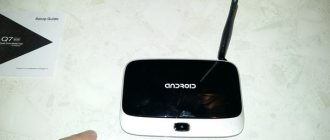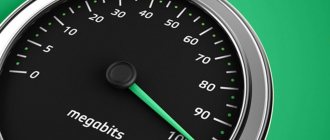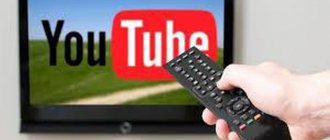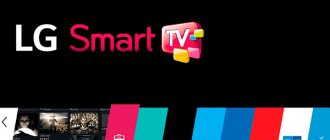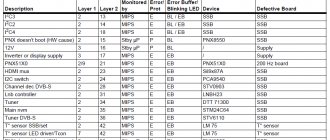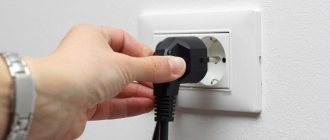One of Android's biggest strengths and weaknesses is its wide range of software options. Samsung, Huawei, Sony, and even Google are offering their own take on the Android experience, introducing their own unique features and ideas for improving the underlying software. All this is made possible by a common core operating system that provides core functionality. Every version of the Android OS you know and love is based on AOSP - Android Open Source Project.
The best Telegram channel about technology (possibly)
AOSP is an open source operating system project maintained by Google. Since the code is open source, anyone can freely view and contribute code and corrections to the project's repository, although Google oversees its overall direction and most of the development. AOSP is updated regularly to include the latest bug fixes and security patches for Android. Google also unveils major new OS features at I/O every year. Android 11 is the latest version and Android 12 will be released later in 2021.
The Android open source project not only allows third-party developers to make changes, but can also be used for free under a special license. Manufacturers like Amazon and Samsung are free to edit the project for their own purposes and develop their own products like Fire OS and Tizen. This proved to be an important factor in Huawei's continued development of EMUI and Harmony OS after US trade sanctions and loss of access to Google apps.
It's also important to note that most smartphone manufacturers source AOSP versions from SoC (system on a chip) vendors such as Qualcomm. This is because Android needs to be adapted to low-end hardware using drivers, which we'll talk about later. Historically, this has been a reason for delayed Android updates. Ultimately, Google is happy with this arrangement because it encourages developers to use Android for a wide range of Internet-connected gadgets. In turn, many companies make fixes and improvements to the OS. It's a win-win.
Conclusion
The article describes in detail what AOSP is, what are the capabilities, advantages and disadvantages of firmware with source code. For developers and enthusiasts, the firmware allows them to experiment, create a unique image or implement interesting functions and capabilities. At the same time, the AOSP project is aimed only at a limited audience and, without the lack of proper support, is not suitable for regulatory use. In addition, without Google services, such firmware loses in all respects.
Perhaps the situation will change next year if Huawei finishes developing its own firmware on AOSP. The company has a certain margin of safety and support from the Chinese government to develop an ecosystem similar to Google. At the same time, it is possible that the American company will begin to put a spoke in Huawei’s wheel in every possible way and prevent the loss of finances on advertising.
Have you used firmware on AOSP? Leave comments with thoughts and feedback regarding firmware with source code.
AOSP vs Android: They're not the same thing
The Android Open Source Project is often confused with stock Android, although AOSP is actually just the basis for it.
AOSP contains everything developers need to create Android, but does not include everything needed for a finished smartphone. First, Google and AOSP cannot provide kernel drivers for every hardware configuration. By device driver we mean the firmware required by the phone's hardware, such as the processor or cameras. Smartphone and system-on-chip manufacturers such as Qualcomm and Samsung must include these drivers in their Android build. This is partly why updates take time.
AOSP also doesn't come with Google's suite of apps, such as the Chrome browser, YouTube, or even the Google Play Store. It also doesn't include a number of Google's hidden technologies and APIs that enable features like mobile payments, voice commands and cloud storage. They are licensed separately as Google Mobile Services.
When Huawei lost access to US technology, it could no longer license GMS, but could continue to use AOSP. Thus, Huawei has started replacing GMS features with its own Huawei Mobile Services. However, this means that applications that rely on GMS must be rebuilt using the HMS to function properly.
Any manufacturer wishing to install GMS on top of Android must obtain a GMS license and a Mobile Application Distribution Agreement (MADA) for their device, and then undergo several tests: Android Compatibility Test (CTS) to verify software and hardware components and APIs, then suites Google Mobile Services (GTS) and Vendor (VTS) tests to test multimedia capabilities, OS kernel and HAL capabilities. Another requirement for obtaining a GMS license is that you must pre-load a number of Google apps on your new device.
The distinction between AOSP and GMS came into play after the trade dispute between the US and China.
Battle of smart TV platforms: Tizen TV, WebOS 2.0 or Android TV?
Are you looking for a new, smarter TV or are you planning to trade in your analog box for a high-tech gadget for the first time? Now the main thing is not to go wrong with the basics - the platform, thanks to which your new faithful friend and guide to the world of entertainment will, in fact, function. What to choose? Today we will dot all the i's by taking a detailed look at the key platforms on the market - Tizen TV, WebOS 2.0 and Android TV.
We carry out testing on the following TV models (before starting the tests, the firmware of all devices was updated with standard TV tools):
— Tizen TV: Samsung Smart TV UE32J6300, software version T-HKMFDEUC-1411.0
— WebOS 2.0: LG 43LF630, software version 04.00.30
— Android TV: Sony KD-43X8305, software version PKG2.605.0052EUB
TV setup and Smart TV interface:
So, let's start from the very beginning - the first launch of TV. We turn on the TV from the so-called cold start (that is, the first start after a long period of inactivity without electricity). Excellent performance is demonstrated by Tizen TV and WebOS 2.0 - devices on these platforms will begin to “talk and show” 6 and 5 seconds, respectively, after pressing the power button. Android TV fails the first test miserably - the TV will wake up only after 52 (!) seconds. Let's take note.
Next we move on to configuration. Since, for the purity of the experiment, we updated the firmware on all TVs in advance, we are now performing a full reset on the TV and checking how long it takes for it to set everything up from scratch again. Tizen TV immediately pleased us - it took us only 3 minutes to complete 5 setup steps. Everything is so simple and intuitive that even a pensioner can handle it. Setting up WebOS 2.0 already took 9 minutes - an average of one minute for each step (there are 9 in total). The intelligent assistant WebOS 2.0 BeanBird did not really speed up this process (it later turned out that the bird performs more entertainment than auxiliary functions). Android TV let us down here too - 14 steps stretch over a full 15 minutes, and for the first 5 minutes after turning on the TV is preparing to start, without giving any messages to the user at all. What is it worth? Who is waiting? Is he even okay? Unclear.
After the TV finally expressed a desire to communicate with us, we learned all the delights of the biggest misunderstanding in TV androids - the lack of control of the mouse pointer on the TV via a remote control, which its older competitors have been using for many years. Trying to connect a mouse to the TV does not change the situation in any way - some interfaces do not respond to the mouse at all, while others, although they do respond, are still impossible to work (for example, it is impossible to scroll through the horizontal list, which, for a moment, consists of the entire TV interface). Suddenly, Android TV found itself with an extremely inconvenient interface to use.
The main weakness of the WebOS 2.0 interface is its slowness and thoughtfulness. Do not try to press the remote control buttons immediately after turning it on - for about 10 seconds you will not see anything except the optimistic inscription “functions will become available soon.” WebOS 2.0 demonstrates a large number of errors in the interface organization - incomprehensible and duplicate questions during setup and further work, the lack of a clear logic of the screen hierarchy, the inability to return to the previous step or back to watching TV with the “back” button, etc. It's easy to get lost in the webOS 2.0 interface - there are too many doors leading to the same "rooms" and you can't always return from where you came.
We liked the Tizen TV interface the most - fast, convenient, very logical. There are no problems with returning by pressing the “back” button, like competitors have.
Watching TV channels and photos/videos:
Let's start by simply flipping through channels. And again Androids are behind the entire planet. The delay when searching through analog channels was 3 seconds (versus 1.2 and 1.3 seconds for Tizen TV and WebOS 2.0) and 5 seconds when searching through digital channels (versus 2.8 and 2.9 seconds for competitors, respectively).
Smart TV functions work everywhere at the same time as watching TV - this is good. But, alas, not everywhere these functions correspond to the main purpose of the TV - watching TV. Want to record TV shows? Then neither WebOS 2.0 nor Android TV TVs are for you. Despite the fact that Sony declares this capability on its Android TVs, in fact it has not yet been implemented. The Timeshift (the ability to pause the broadcast) and Multi-Link Screen (the ability to simultaneously see a TV channel and application) functions are also supported only in Tizen TV. Want to add both analogue and digital channels to the same favorites group? This cannot be done either in WebOS 2.0 or in Android - only Tizen TV does not have this strange apartheid policy.
As for the basic functions of viewing photos and videos from a USB-connected disk or flash drive, we checked the most important scenario: connect, select a movie, watch. It should be noted that everyone here coped with dignity. The picture quality differs from model to model, regardless of the platform - so we will not dwell on this issue here. This, of course, is the topic of a separate review.
A little about performance when turned on. Here Tizen TV becomes the undisputed leader - just one second from pressing the power button until the “talking head” appears. Its rivals have worse indicators: if you own a WebOS 2.0 TV, you can start watching after clicking on the remote control in 5 seconds, if you have Android TV, then in four.
In general, the summary is like this. If you're one of the 83% of users who use their TV to watch TV channels, don't get Android TV. The ability to watch TV channels on this TV is very sluggish - obviously, this operating system is aimed at completely different tasks and other conditions of use. The WebOS 2.0 device is a little closer to the TV. It is clear that a lot of work has been done to integrate TV channels into the mobile operating system, but in the process of using TV you can still feel the seams of such integration.
The developers of the Tizen TV interface remembered from the very beginning that the main scenario for using a TV is still watching TV channels. Everything that an advanced TV viewer needs today, who wants not only to watch the broadcast, but also to make a recording, and at the same time surf through applications without interrupting the program or movie, is provided here. As a result, for traditional TV viewing, this is the best TV we are considering.
Applications:
We are dealing with TVs, so first of all we are looking for applications for viewing video content. And not just video content, but Russian-language video content.
The future of AOSP: a new operating system is coming
The Android Open Source Project continues to be the foundation of Android's success thanks to countless hours of contributions from developers around the world. While Android devices aren't going anywhere anytime soon, Google is already looking to the operating system of the future.
Google Fuchsia first appeared on GitHub in August 2021, but we haven't heard much about it since then. We still don't know much about Fuchsia and whether or when it will make it to consumers. It looks like Fuchsia is designed for an even wider range of devices than Android. It also has Google's own non-Linux kernel called Zircon, and supports Google's Dart scripting language. Currently, Fuchsia is free and open source software, just like Android. Let's hope Google's plans for the future remain unchanged.
Attention! This is a translation of an Android Authority article.
Conclusions about the differences between bailiffs on Android TV
| pros | Minuses |
| The interface is maximally adapted to work with the remote control on a multi-inch screen. | Chopped Play Market. This cannot be called a minus, since it can be solved by using an external drive. |
| Recommendations for watching videos, TV series, films and other video content. | |
| Search optimized for viewing content. | |
| Convenient work with applications and games optimized for the Android TV platform | |
| Full Chromecast support |
Rating of small inexpensive Smart TVs on the Android platform
KIVI 24H600KD 24″
TV with a screen diagonal of 24″ and HD resolution. It is equipped with Android 7.0 OS. The dark gray body stands on two legs. There are AV connectors, 2 HDMI, 2 USB, Ethernet (RJ-45). The model can be connected via Wi-Fi. The TV allows you to read MP3, WMA, JPEG, MPEG4, DivX, MKV files.
Picture brightness 220 cd/m2, dynamic contrast 7000:1, MVA matrix type. Dolby Digital surround sound is provided by two 5W speakers. The volume of RAM is 1.5 GB, internal memory is 8 GB.
HARPER 32R670TS 32″
Model with a 32″ display diagonal and HD resolution. It is equipped with Android 7.1 OS. The black body has a pair of legs. There are AV connectors, 2 HDMI, 2 USB, Ethernet (RJ-45). The TV recognizes file formats MP3, MKV, JPEG, MPEG4, HEVC (H.265). Picture brightness is 240 cd/m2, dynamic contrast is 70,000:1.
Surround sound with auto volume leveling is provided by a pair of 6W speakers. Internal memory size is 4 GB, RAM – 1 GB. The TV has a number of useful features: TimeShift, sleep timer, child lock, program recording, electronic TV guide.
SUPRA STV-LC24ST0075W 24″
TV with a screen diagonal of 24″ and HD resolution. It is equipped with Android 9.0 OS and ARM Cortex-A53 quad core. The black body rests on a pair of legs. There are AV connectors, 2 HDMI, USB, Ethernet (RJ-45), component. The TV connects via Wi-Fi and recognizes the MPEG4, HEVC (H.265) file format. Picture brightness 200 cd/m2, dynamic contrast 80,000:1.
The sound is reproduced by two speakers with a power of 2 W each. Internal memory is 8 GB, RAM is 1 GB. The TV has a function to display the TV program guide.
Blackton 32S02B 32″
Model with a 32″ screen diagonal and HD resolution. It is equipped with Android 7.0 OS. The TV has a dark gray body and stands on two legs. There are AV, component, VGA, HDMI x3, USB x2, Ethernet (RJ-45) connectors. The model reads MP3, MKV, JPEG file formats. Connects to devices via Wi-Fi. Picture brightness 210 cd/m2, dynamic contrast 3000:1.
Surround sound with automatic volume leveling is reproduced through two speakers with a power of 7 W each. The TV has a set of useful functions: video recording, TimeShift function, shutdown timer and child lock.
Yuno ULX-32TCSW217 31.5″
TV with a display diagonal of 31.5″ and HD resolution. It is equipped with Android 8.0 Oreo. The model has a white body standing on two legs. There are connectors 3 HDMI, 2 for flash drives, Ethernet (RJ-45), AV, component, VGA, 3 HDMI, 2 USB, Wi-Fi. TVs recognize file extensions MP3, WMA, MKV, JPEG, MPEG4, HEVC (H.265). Picture brightness is 230 cd/m2, contrast level is 1400:1.
Surround sound is provided by a pair of 10 W speakers. The internal memory is 8 GB, RAM is 1 GB. The model has many useful features: video recording to a flash drive, TimeShift function, sleep timer, child lock.
Android TV and Android TV/set-top box
It was previously mentioned that the Android TV operating system can only be installed on Googl-certified smart TV receivers and set-top boxes. But today there are a large number of manufacturers on the market offering Android-based equipment. And this equipment, as a rule, is sold at a much lower cost than that which is controlled by a special version of the Android TV OS.
It may seem that Android TVs/set-top boxes are some kind of fake. But that's not true. The fact is that these devices use the most common Android system - the one that is distributed free of charge. Those. Manufacturers are not required to certify their product with Google and make all sorts of deductions that manufacturers of TV equipment running Android TV do. However, in the documentation for TV equipment without the corresponding Google certificate, the phrase “Android TV” cannot be indicated anywhere; only the expression “based on Android” is allowed.
From all this, it would be logical to ask: “Why buy Android TV when there are cheap Android TV equipment?” It's simple. The fact is that only certified TVs and set-top boxes have access to all Google services (Google Play Services), as well as the Google Pay system. Owners of Android TV receivers/set-top boxes cannot purchase applications from the Google Play store or use other “benefits” from Google.
In addition, Android TV has a built-in framework “The Android TV Input Framework”, which allows you to search for TV channels and online video broadcasts on the Internet using metadata. TV receivers based on Android cannot do this.
Conclusions about the differences between bailiffs on pure Android
| pros | Minuses |
| A full-fledged Play Market with the ability to install any applications. | Inconvenient controls. This disadvantage will make itself felt if you use a regular remote control, which does not support smart functions such as voice input and Airmouse. |
| The ability to use a variety of launchers with appropriate designs, including ones that are as similar as possible to the Android TV operating system. | |
| Voice search works in a similar way to smartphones and tablets, which makes it less suitable for watching only videos. (a debatable plus, but it can’t be called a minus either) Just keep this fact in mind when choosing a TV box. | |
| A pure Android set-top box can be used for a variety of purposes: watching movies, working, playing games, and other forms of entertainment. | |
| The last, one of the most important advantages is a larger range of set-top boxes on this platform, as well as a lower price, since the company does not spend money on obtaining certification from Google. |
How does Android TV work?
Any modern “smart” TV is a computer combined with a large monitor. The Android TV operating system takes over the function of managing all the equipment of the television receiver. The latter must include Wi-Fi or a wired network adapter. Both provide connection between TV equipment and the Internet. The technical content of modern “smart” TVs, coupled with the installed Android TV system, allows you not only to display Internet TV channels, but also any online video and music, as well as launch Android applications (compatible with Android TV).
Almost the same thing was said above about Android TV set-top boxes. Let us add that these devices must have a physical interface (usually HDMI), i.e. socket for connecting a cable through which images are transmitted to a TV or computer monitor.
Differences between Android consoles
Boxes on bare Android, which have a full-fledged interface and functionality like in smartphones or tablets. The solution is suitable for the following categories of users:
- Those who want to pay less and also prefer to choose from a larger range of devices.
- Advanced users who can work with launchers and third-party programs
- People who want to use set-top boxes not only for watching video content and entertainment, but also for surfing the Internet and working.
What is Android TV?
Android TV is a special version of the operating system for managing “smart” television equipment - both smart TVs and smart TV set-top boxes that turn a regular TV receiver or even a computer monitor into a “smart” multimedia device.
Also, “Android TV” sometimes means Smart TV set-top boxes. They are a small device (about 10 by 10 cm), the main task of which is to play (on a TV/monitor) multimedia content (video, music), games and applications, Internet television (what is offered, for example , Internet providers) and, of course, opening websites. But this is not the entire list of Android TV technology capabilities.

